Blended Scotch whisky galore with Tomatin, Cadenhead, Cluny and Scottish Leader
For my two hundredth tasting note blog, I decided to go back to the mother of all creation in the world of whisky, which is of course the category Blended Scotch. You know all the big brands, like Johnnie Walker, Ballentine’s, Chivas Regal, Dewar’s White Label and Grant’s. To name a few. To be totally honest, I never really drank blended Scotch because my first encounters with it just were not that good. I thought all whisky was like that, until someone poured me a single malt. The rest is, as they say, history. That did not make me a snob though. I have since tasted quite a few blended whiskies that are perfect as they are. These are probably not the ones you will find on the shelf in your supermarket, but more intended to show off what blending can actually do. Also, if you are new to drinking whisky, it is very worthwhile to dig up old blends from bygone eras, to take note of the difference between generations of products. If you ever tasted a Johnnie Walker Red Label from the 1960s, you will know what I mean.
Just in short: a blended Scotch whisky contains at least two (but often more) malt whiskies from different distilleries, mixed with grain whiskies. The first blended whiskies were pioneered by Andrew Usher around 1860. It was a success to blend, as the often very raw malt whiskies were softened by mixing it with grain whisky. Today, blended Scotch still stands for the bulk of whisky sold around the world.
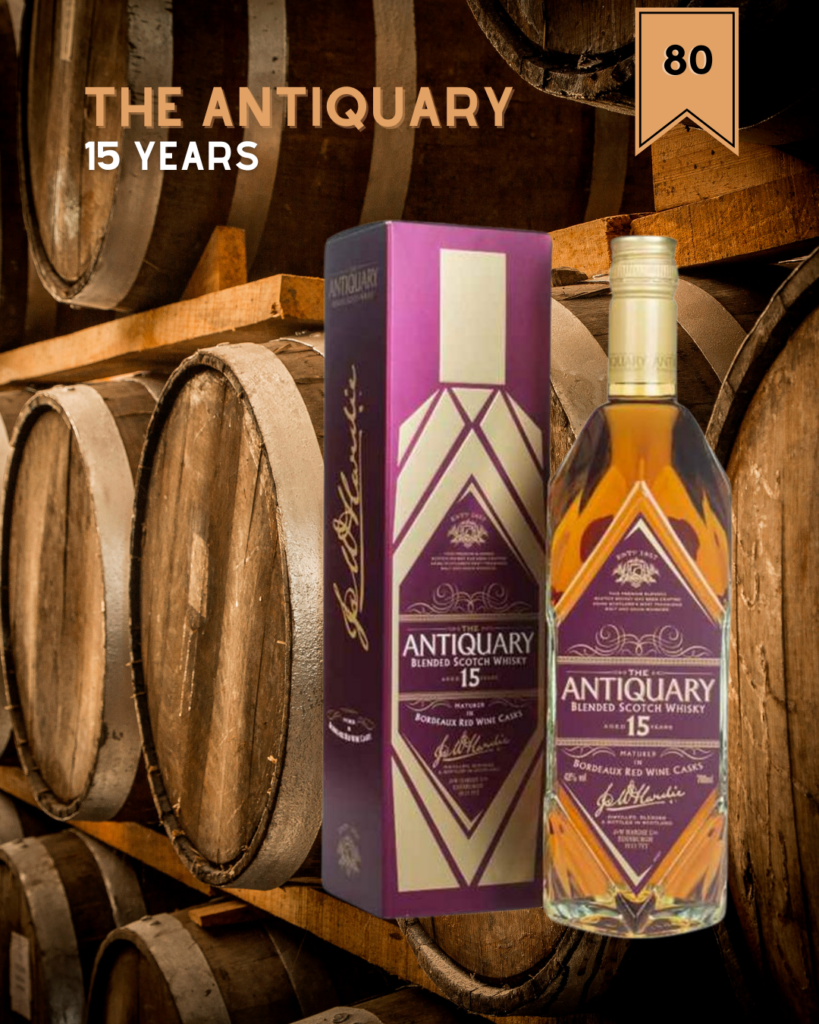
The Antiquary 15 years old, bottled at 43 % abv
First things first: The Antiquary is a brand owned with pride by the Tomatin Distillery, so you can guess which malt is at its core. They have relaunched the appearance of the range just last year, and it looks quite nice. The sample I got is from the previous (diamond shaped) bottle. This whisky was matured in Bordeaux red wine casks, and just 6.000 bottles were produced.
Upon Sipping: A little bit subdued, I have to say, but fruity notes do emerge after a while. Some sharp sour whiffs reveal that the influence of the casks is there. Some dustiness and some wood. Has a dirty side that does not really show, but lingers in the background, providing complexity. On the taste, the tannins reign supreme, but there is sufficient balance from the age, leaning back with a good dose of chocolate and wood. A rather bitter, chocolatey finish marks the exit. Missing on the palate is the fruitiness that seems to be promised on the nose. The wine is (too) loud here.
Word to the Wise: It is certainly a well-composed blend, but it leans towards an extreme bitter character, with few fruity notes to provide some pleasure. Not a crowd-pleaser, but rather challenging. I can imagine some people going for this and enjoying something ballsy here.
Score: 80 points
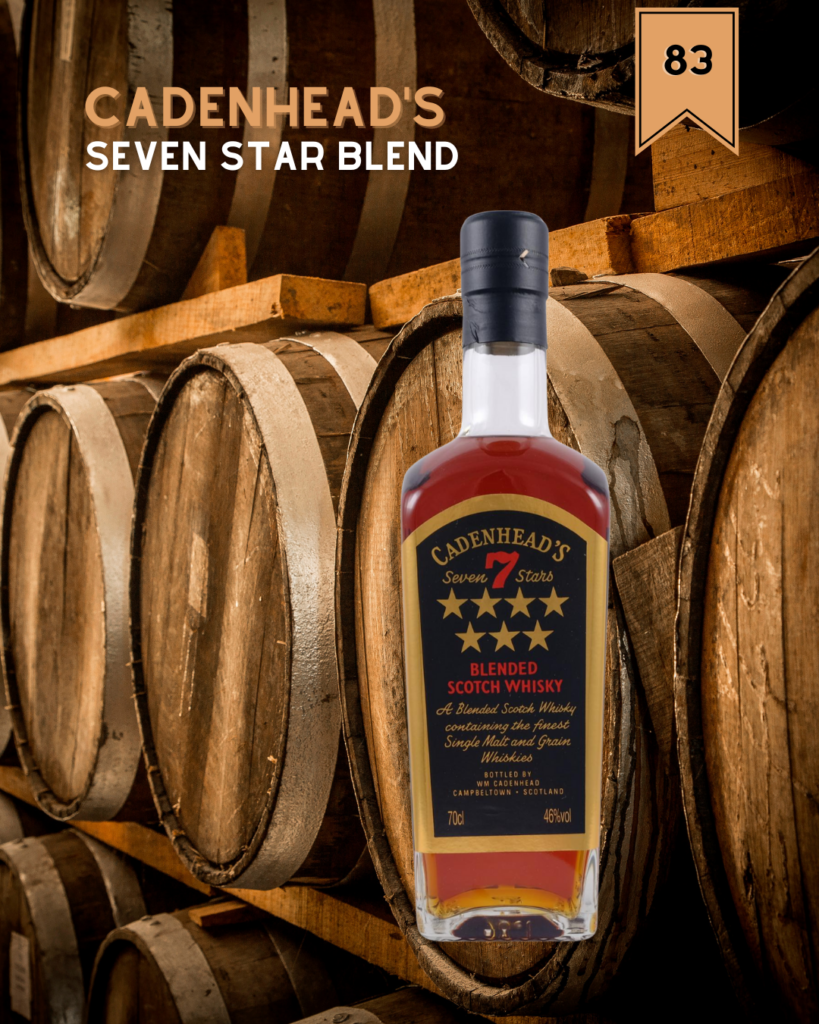
Cadenhead’s Seven Star blend, bottled at 46 % abv
First things first: Apparently an old brand by Cadenhead’s brought back to life in 2021. This is a 2024 edition. The grain whisky content is usually much older (25+ years) while the malt whisky content is at least 10 years old, in a 60 to 40 malt-grain ratio. After blending, the result is married in ex-oloroso sherry casks.
Upon Sipping: Comes off very classic, with lots of raisins from the sherry casks. The colour is beautifully dark. Red berries dominate the aroma, but also some mold wood and wet, damp earth. The taste is surprisingly floral, with hints of lavender and gunpowder too. There is maturity, but that mostly comes through via bitter notes, and not exactly lively ones. It feels a bit tired. I dropped in a splash of water and that seems to bring some life to this Cadenhead’s blend. More red fruits emerge and a certain freshness now the gunpowder is gone. The taste reveals more complexity, but it still remains rather “dark”. The water gives the finish a nice fruity edge.
Word to the Wise: Another blend to play with, this one I would really recommend to feed some water. It releases more treasures than it is willing to give away undiluted. In the end, a decent offering in the glass.
Score: 83 points

Scottish Leader 25 years old, bottled at 40 % abv
First things first: Bottled in 2007 in a beautiful square decanter. Supreme Blended Scotch!
Upon Sipping: Scottish Leader is a very entry level blend, but this one came with good looks and quite a high age. Sticking my nose in the glass, there is a rich reward of old wood furniture, rich forest fruit, leaning towards berries, plum and peach. Like walking an orchard after a long, hot summer. The trees are tired and ready to drop their leaves, fruit has fallen off and lies rotting in the grass, and the smell of damp earth fills the air. I like this smell, to be honest. Taking a sip, of course, the low abv has an impact on the experience. But the fruitiness remains intense, with lots of peach, raspberry and sugary notes. Only on the finish I pick up a wooded note, and maybe even a hint of Old Bottle Effect. The whisky has sufficient body, but lacks the power of a few more abv.
Word to the Wise: Despite its shortcomings, this smells, tastes and feels “old”, a whisky from yesteryear. Bottled in 2007 and being 25 years old, this whisky was most surely composed of malt and grain distilled in the late seventies and early eighties. That is very noticeable. It truly oozes class. This is one to look for on auctions.
Score: 84 points.
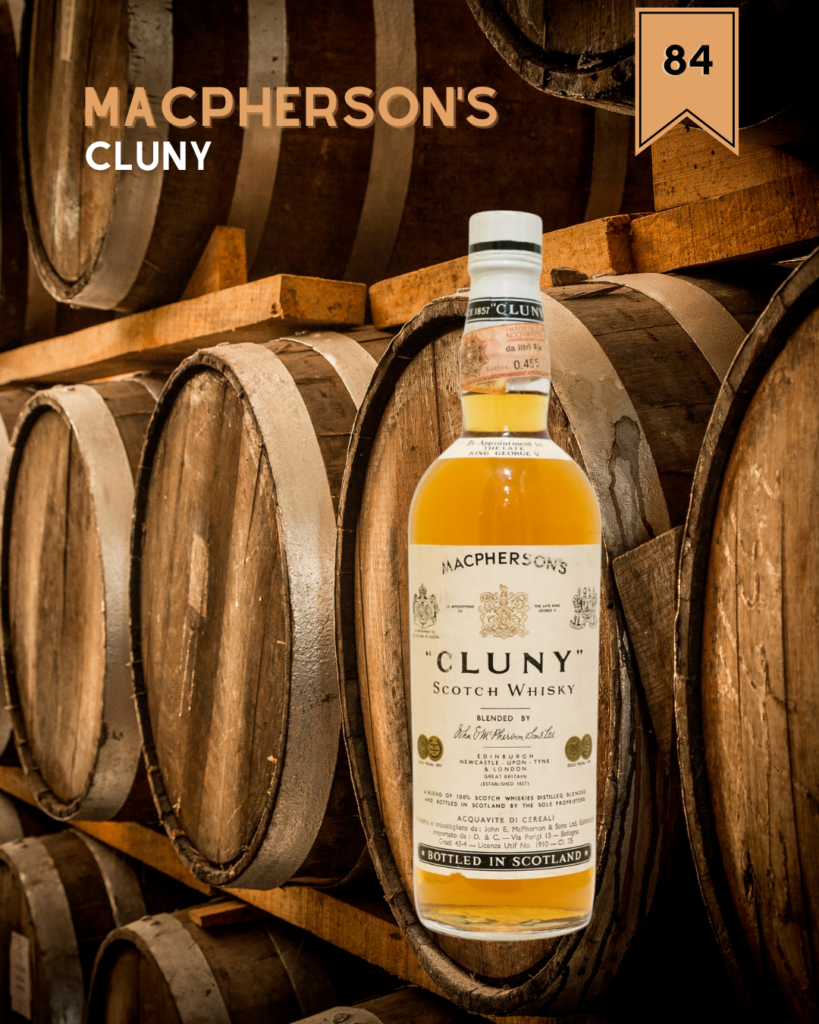
MacPherson’s Cluny, bottled at 43,4 % abv
First things first: A blend by John E. MacPherson & Sons for D. & C. Bologna, Italy. This brand still exists in certain markets, but by researching the particular bottle I had a sample from, the “43,4 gradi” statement seems to indicate that this is a blend produced and bottled in the 1950s.
Upon Sipping: This very old blend did quite suffer from the long years in the bottle. This particular one was cracked open in July 2023 and has been breathing in the sample bottle ever since. There is a metallic note, but underneath that we find the ancient whisky, probably from the first batches distilled after the Second World War ended. Can you imagine that? Some hints of orange zest, slight peat, mostly grainy with some warm breaded notes. Some wood notes, like walking in the store where people dropped their old furniture for a second chance, and you open a cabinet door on one of them. Quite nostalgic. The taste is rather oily, and full on grain and porridge. The metallic note remains, but then there is a nice little smoky edge that lingers on the finish. With this being released in Italy, I am not surprised it has this young, fruity, easy-going style that you will find in old Glen Grant and 5 years old Tomatin that were very popular in those regions.
Word to the Wise: A rather simple blend that both gained from and suffered in the bottle over all these decades. It probably gained more complexity in the glass than it ever had, but also lost some innocence because of it. If only we had a time machine to go back to 1958 and drink this on an Italian piazza in the sun, even with some ice cubes in it. Delightful.
Score: 84 points
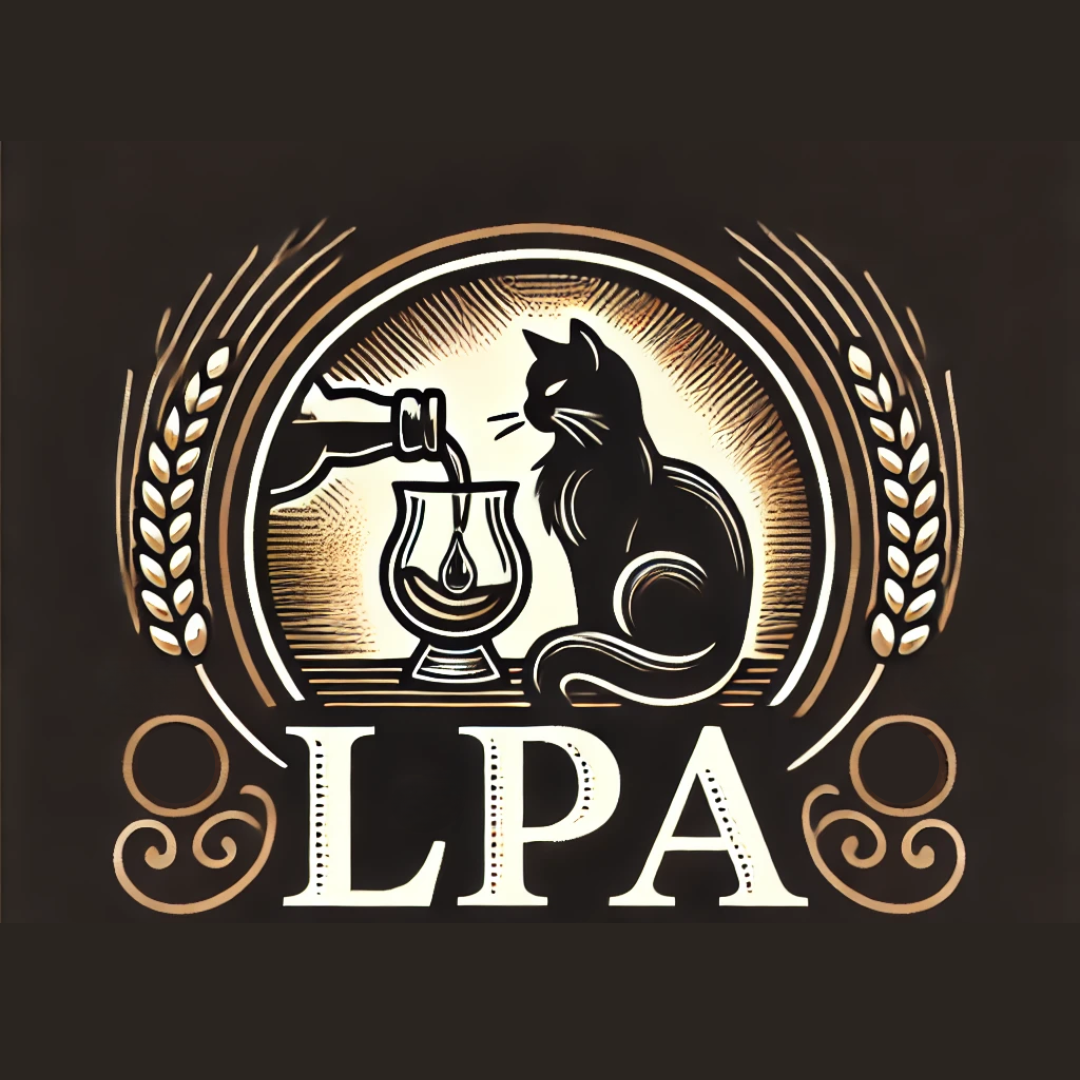
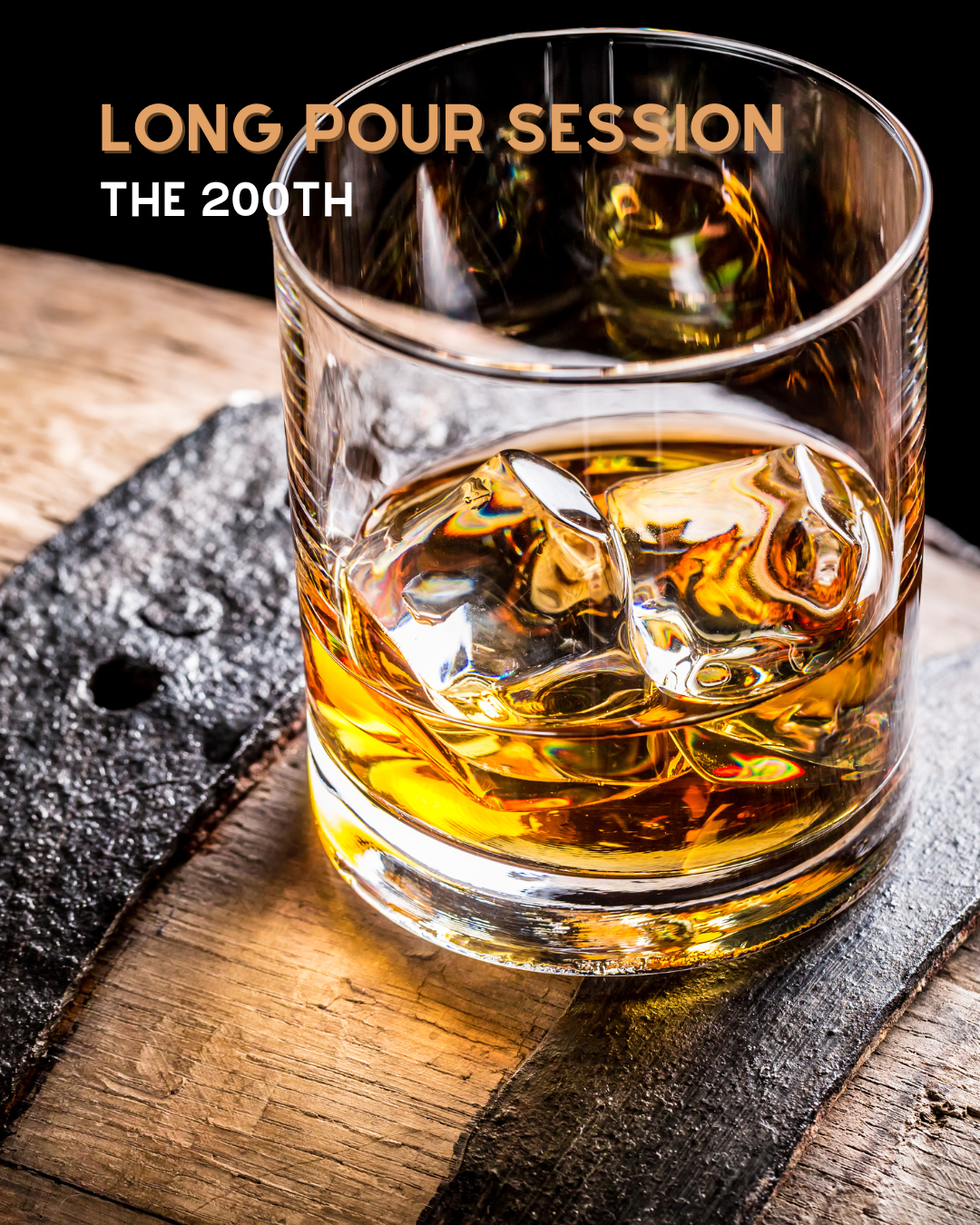
Geef een reactie